How The Division 2 turned Washington into a breathtaking post-pandemic playground
The art and science of The Division 2's stunning recreation of Washington, DC

I can't remember a single character from The Division, but I'll never forget the little details in its city. The underground graffiti, the icicles on car bumpers, the trash bags strewn about empty houses, the dead lights lining streets like silent watchmen, the endless creaky car doors. The Division's Manhattan was irresponsibly, irresistibly detailed, so ever since The Division 2 was first announced, I've been dying to take a look at its world, its ruined and ostensibly one to one take on Washington, DC.
So, I recently visited the real DC and spoke to several developers about the making of The Division 2's ambitious world. I wanted to find out how accurate the game really is, but the more I learned, the more I realized that it's not just accuracy that makes The Division 2 so intriguing. Because in addition to a staggeringly detailed city, it's also a fully-fledged disaster simulation.
"We have a proper footprint to work with to begin with," explained Chad Chatterton, lead environmental artist at Massive. "There's an amazing amount of publicly available information, right down to the placement and age and type of every tree in DC. The way we build up an environment is to first create DC as you see it today. On top of that, we start to think about the chronology of what's happened in-game. Who's been here? What have they done? Maybe the Joint Task Force has setup an evacuation route here, but they've abandoned it, so you see evidence of that. Perhaps you'd see looters come through, so you'd see evidence of that."
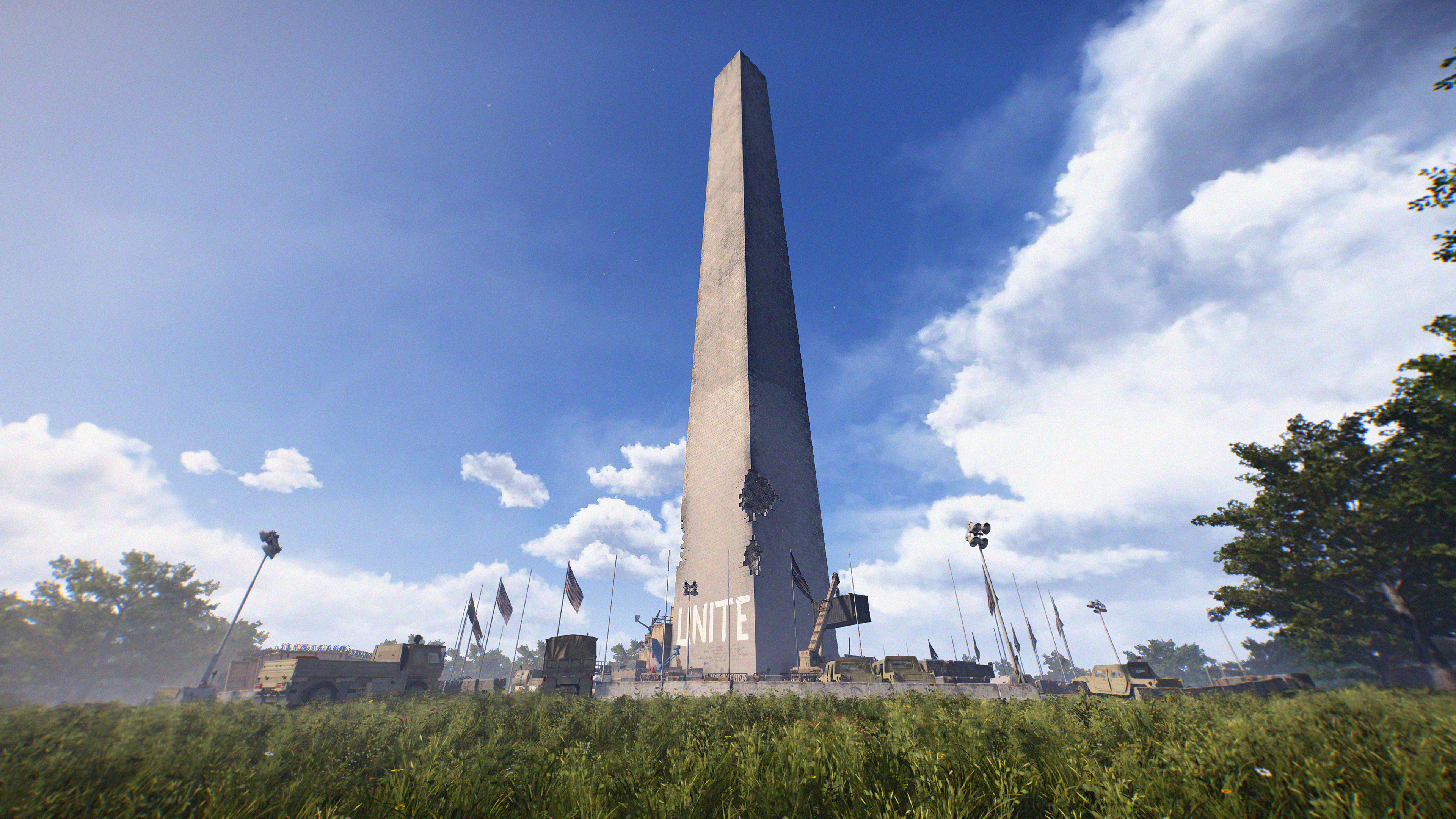
The Division 2 picks up seven months after the original game, and that time gap is one of the most important parts of the game's world. For starters, the "evidence" Chatterton mentioned - the traces of those all-important seven months - is at the heart of the game's environmental storytelling.
For all intents and purposes, The Division 2 uses a near-perfect copy of DC. It's not just the big historic landmarks; you can just about count the fire escapes, traffic lights, or storefronts. As Chatterton put it, if there's a pharmacy on a real street corner, there's probably a pharmacy there in the game. The scope and granularity of the recreation is staggering, but what's more impressive is how Massive expanded on that by role-playing a pandemic.
Predicting DC's collapse
Let's go back to that pharmacy. If there's a pharmacy around, you can bet that it and everything around it has been looted. The windows will be smashed, the shelves empty, the register overturned. Maybe you'll find an Echo - a sort of holographic journal - recounting a physician's desperate attempts to treat the sick using the pharmacy's dwindling supplies, or a parent's equally desperate search to find something to ease their child's pain. Maybe if you turn over every last stone, you can scrounge up some medical supplies that you can then share with a nearby civilian settlement. There are little stories on every street - it's just a matter of finding them.

"We aren't hitting every store exactly," Chatterton explained. "With the buildings themselves we've done our best to emulate what's actually there, but really what we want to do is get the same look and feel even if they aren't identical. It's one thing leading to another, all logically building up stories. It's all these little stories that connect together and make up the whole world, and the look and feel of this transformed DC."
Weekly digests, tales from the communities you love, and more
Massive used more than role-playing to shape its DC. The studio also leveraged a mountain of research. Across multiple scouting trips to DC, researchers spoke to crisis experts, first responders, government organizations, military officials and more to find out what would happen if DC was struck by a real crisis on par with the Green Poison. How prepared are we? Where would people go? What systems would collapse first? Developers scout locations in-person all the time, but it's usually to get a feel for the aesthetic or culture of a region. As lead IP researcher Chloe Hammoud explained, Massive went to DC specifically to ask what could go wrong.
The evacuation roads and supply roads are really faithful to what you would have in a real crisis.
Chloe Hammoud
"We created a worldwide timeline and a Washington, DC timeline," she said. "We have that for each month to make sure we know in November the virus happened, in December the army set up camps, those types of things. We did that for every location in the game. Each main mission and side mission has its own timeline. The authorities would do that, but this faction would come in and transform it this way, you'd have this resource here that would drive people in and they would loot this building. We really think in a pragmatic and logical way to make sure everything is coherent and consistent and also believable."
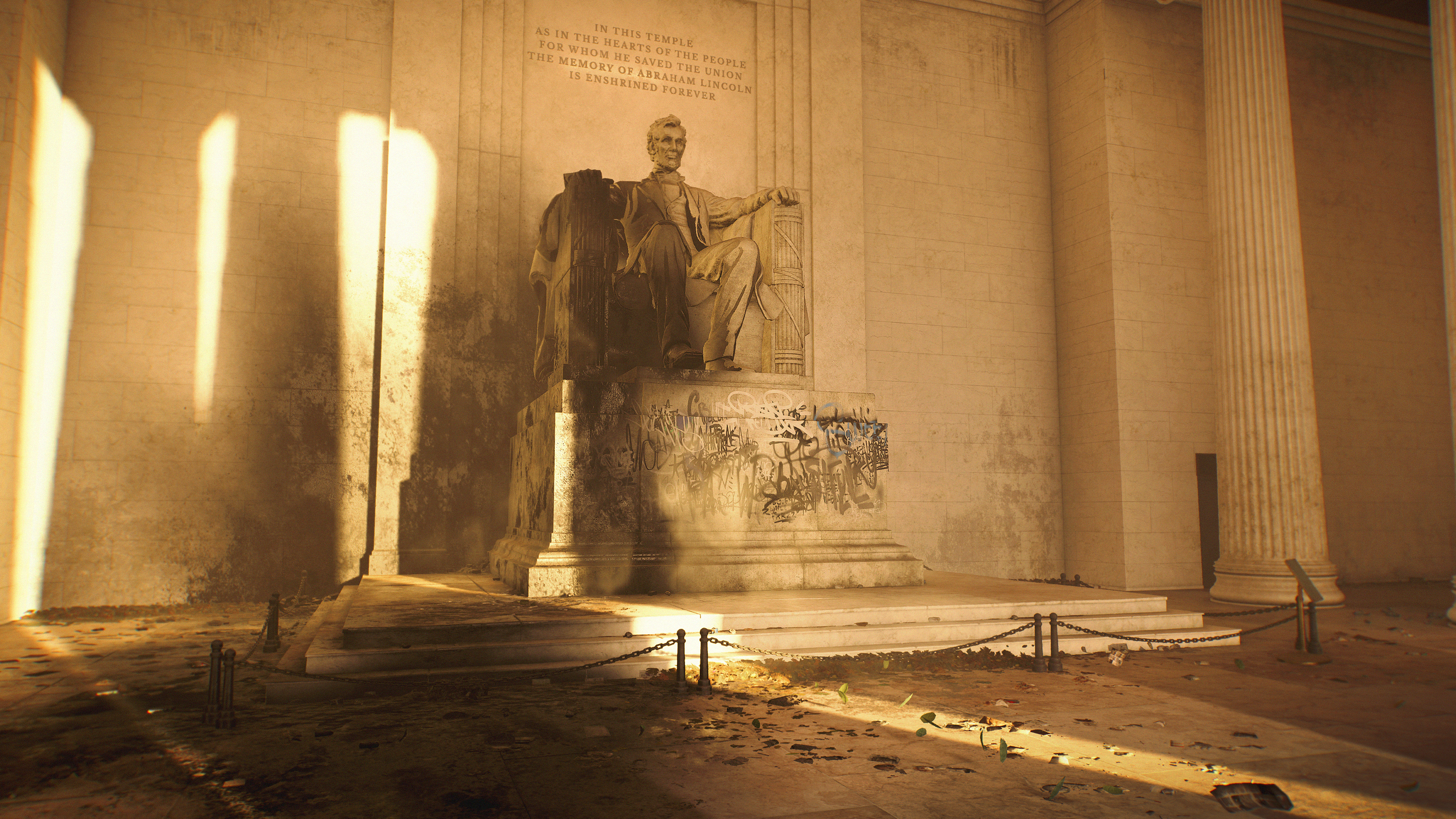
The bones of a disaster
Of course, there's only so much research and hypotheticals can do. Just as some buildings were more difficult to recreate - like the White House, the blueprints for which aren't just lying around - some factors were more difficult to predict. Hammoud started her research three years ago, but she reckons she could go for 10 years and still not see it all. Even so, The Division 2's societal collapse is much more informed than the average apocalypse.
"We look at the shelters on the map - locations people can go to in times of crisis. We have that," Hammoud said. "We have the evacuation roads. That was super important to us. The evacuation roads and supply roads are really faithful to what you would have in a real crisis. We went during summer and experienced the super, super hot summer. We realized we need to have that type of effect in the game, and we played a lot on the weather. It's not 100 percent realistic of course, but we like to know what would happen in real life and to make sure that we can twist and change it a little bit to imagine another reality for players to have fun with."
Hammoud and Massive's other researchers looked at more than just the big-picture stuff, too. They also spoke to musicians, graffiti artists, business owners, and civilians to measure the pulse of the city. What makes DC tick? How does it feel at ground level? What are the cultural landmarks?
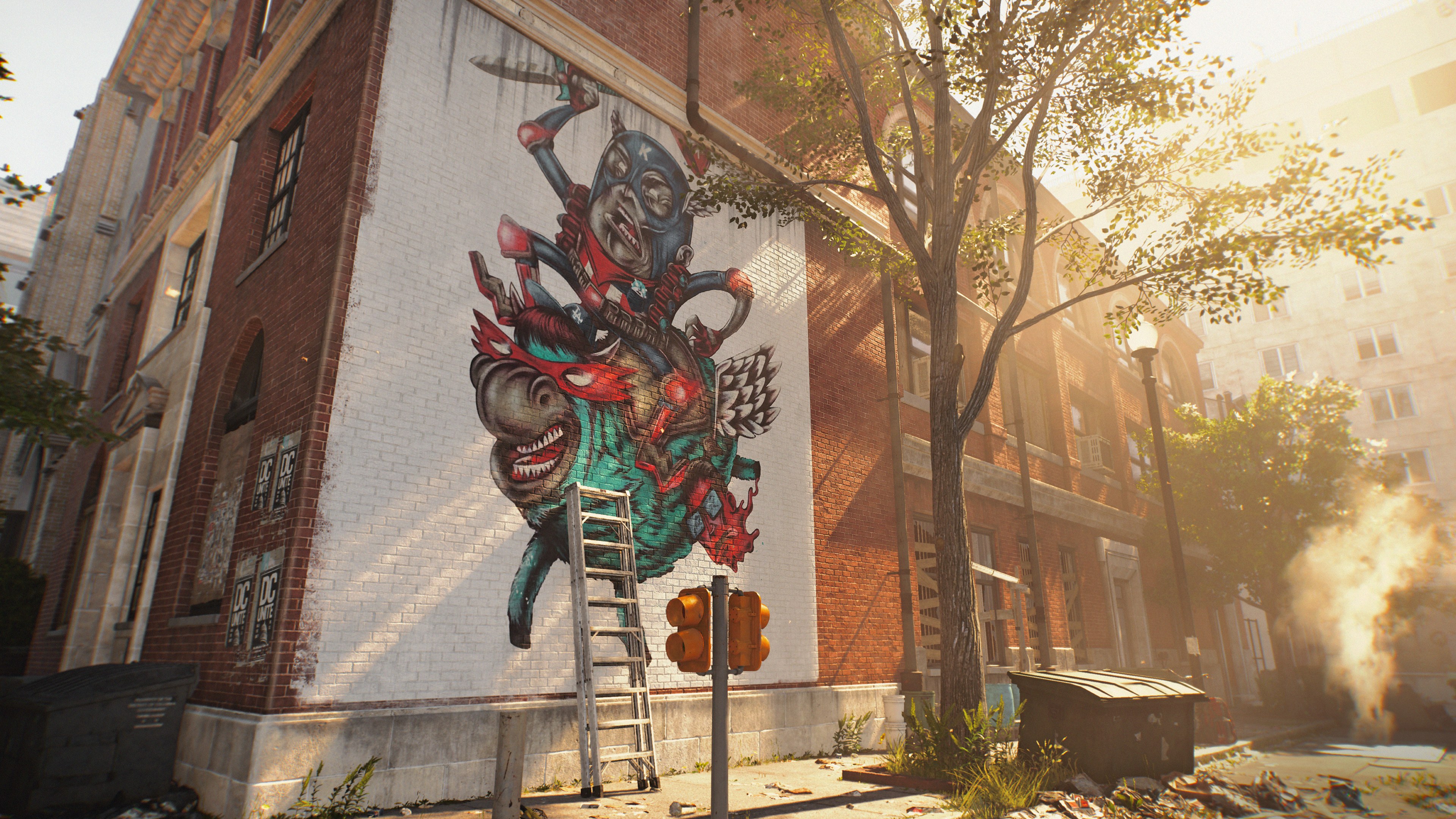
"We wanted room for the communities," Hammoud said. "When we started to do research, we were like, 'OK, Washington is a government city. Are there any interesting aspects of the city that we should cover?' And we discovered a lot - specificities that we decided to integrate. For example, the go-go music. We didn't know it was from DC. But we asked a band to record go-go music for us and we integrated that. We tried to grasp the soul of the city and make sure we are faithful to the culture and its inhabitants.
"It can be super wide. I spoke to a forensic doctor to ask what a 7-month-old dead body would look like. Even if we didn't eventually use the, uh, material that he sent me, it's good to know how it looks. And we want to know the insight of people. Some people are really eager to share. They were eager to help us build a plausible scenario. We met people who were so completely compelling with their stories that we decided to have them as NPCs. We managed to find info and inspiration from all over."
Making the apocalypse fun
Gathering information took a lot of planning and legwork, and it was just as difficult to take all that research and actually apply it to The Division 2. Massive had to destroy its painstaking recreation of DC in just the right ways. The Division 2 is a game after all, and DC wasn't built with gameplay in mind. So, as associate creative director Chadi El Zibaoui explained, the team had to take some creative liberties to turn DC and its many iconic locations into fun, varied levels that suit a third-person shooter.

During the pandemic, Roosevelt Island was used as a mass quarantine, so it's crawling with Green Poison. The island has since been reclaimed by nature, turning it into a lush jungle. Miraculously, some of the quarantined people managed to survive on the island. They've now formed the Outcasts, an enemy faction seeking revenge against the society that abandoned them.
"There was a base established at the Lincoln Memorial from the early days, so it's fenced," Zibaoui said, offering an example of how a level was built. "You start the mission for that right in front of the stairs. You go to the chamber and you realize the camp is all around the Lincoln Memorial. We take you outside so you get that moment of surprise, and then we enter the indoor part of the memorial. There's already some structures inside, like a museum. So we had those initial rooms that allow us to build combat space, and then with the underground supports it's flexible. We make sure it looks how it does in real life, but we took some liberties with the density of the pillars. It's too dense for us, so we had to space them out. We added some structures and stairs to create different sublevels while you're fighting."
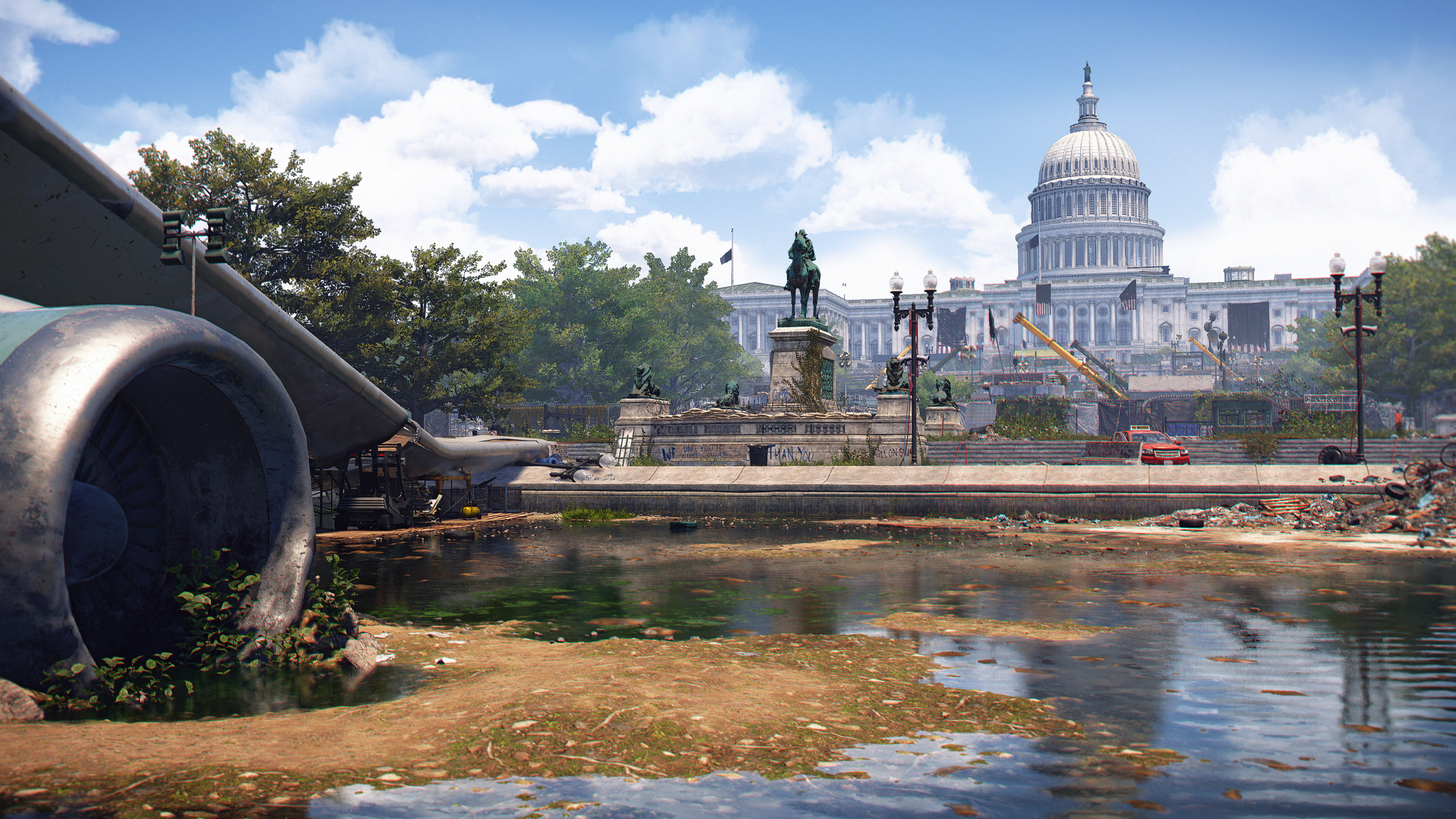
Making DC fit the mold of The Division wasn't always an uphill battle, though. Compared to Manhattan, the city offered a few advantages. It's larger, for starters - The Division 2's map is about 20% larger than the first game by Zibaoui's estimate. Coupled with DC's plentiful landmarks, this gave Massive more room to craft unique missions and fights. Similarly, unlike the rigidly gridded streets of Manhattan, DC is a sprawling city with clearly differentiated areas.
The Division 2's reportedly 40-hour campaign is not a linear sightseeing tour
"That was something we got from the community," Zibaoui said. "They loved the recreation of Manhattan but at some point everyone wants a bit more variety. And if you look at the Lincoln Memorial Reflecting Pool for example, it's a wide open area, something completely new to the game. That was a challenge as well, making that playable, because we cannot keep that as open as it is. And again, this is why the research helped us. First responders gave us that information. This area would be turned into a staging area, if you need to build refugee camps you'd do it here, and so on."
The layout of the city played a big part in structuring the campaign. Big missions can be assigned to big landmarks, which lends them a certain weight you can't always get in the familiar alleys of Manhattan. We already touched on the mission to take back the Lincoln Memorial and Memorial Bridge. In another mission, you infiltrate the Archives of Congress to reclaim the Declaration of Independence. There's a mission at the Smithsonian Air & Space Museum, which one enemy faction has basically been strip-mining for metal, where you blow up everything in sight. That said, The Division 2's reportedly 40-hour campaign is not a linear sightseeing tour - it would be such a waste to create this gorgeous city and then tell players where they can't go.
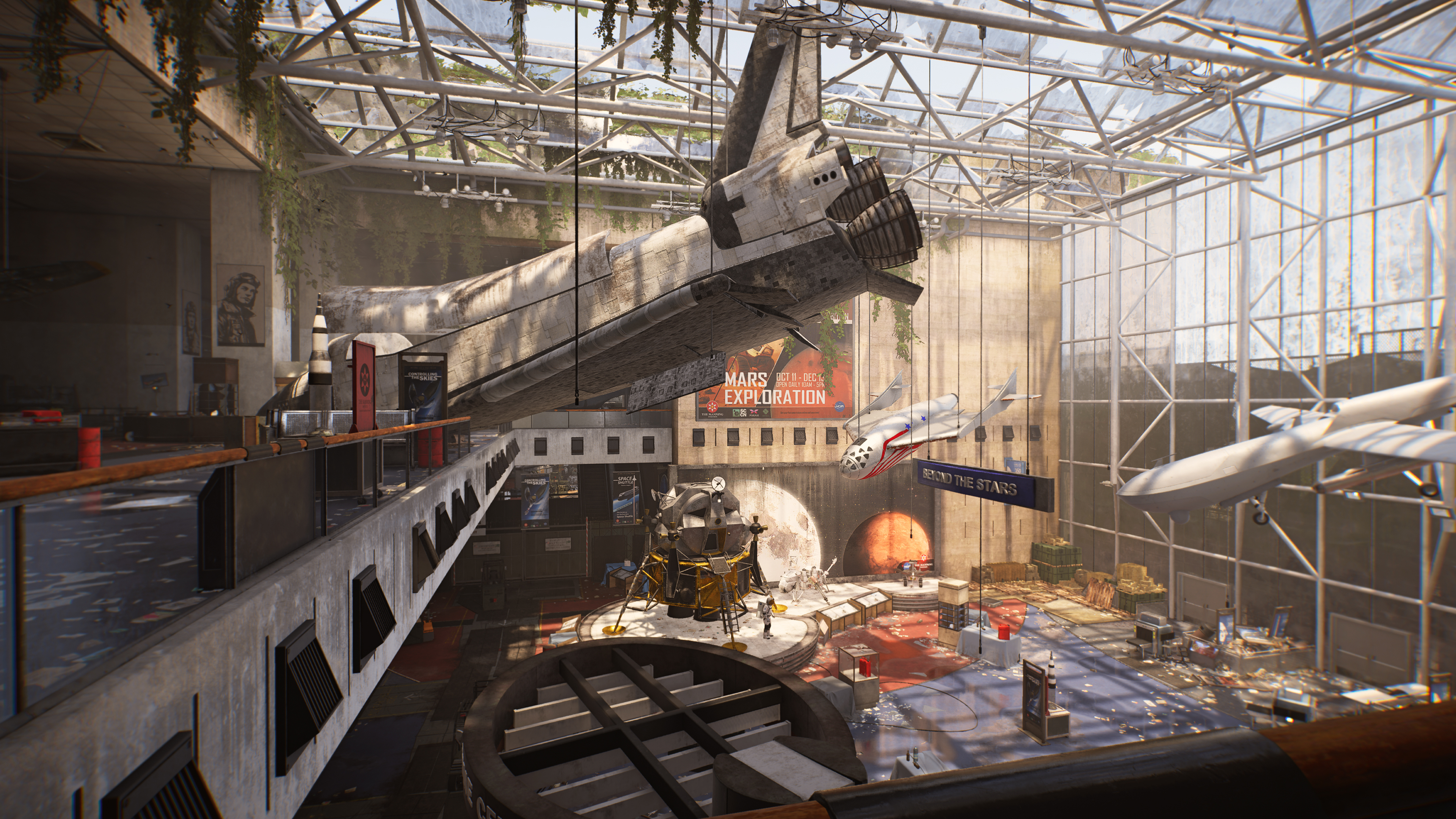
"It's really guided by your character level, but you can still branch off," Zibaoui said of the campaign. "The progression is mainly mapped from the base of operations, the center of the map, and then you have to make contact with civilian settlements. Those settlements are really driving your progression. Once you get to a settlement it opens up different activities, and from that point you have flexibility in how to tackle them."
I have no doubt that I will get completely sidetracked before I even find my first settlement. I always get lost in these big open-world games, and with such a detailed and flavorful world to explore, The Division 2 will surely be no exception. Hell, I got side-tracked in the one-hour demo I played in DC, to say nothing of the wanderlust that hit me during the open beta. Besides that, knowing the real stories that helped shape the game's world somehow makes it more inviting. Yes, The Division 2's Washington, DC is incredibly realistic, but I'm more interested in the fiction supported by that realism. That'll be Massive's real magic trick - not recreating DC, but transforming it.

Austin has been a game journalist for 12 years, having freelanced for the likes of PC Gamer, Eurogamer, IGN, Sports Illustrated, and more while finishing his journalism degree. He's been with GamesRadar+ since 2019. They've yet to realize his position is a cover for his career-spanning Destiny column, and he's kept the ruse going with a lot of news and the occasional feature, all while playing as many roguelikes as possible.


